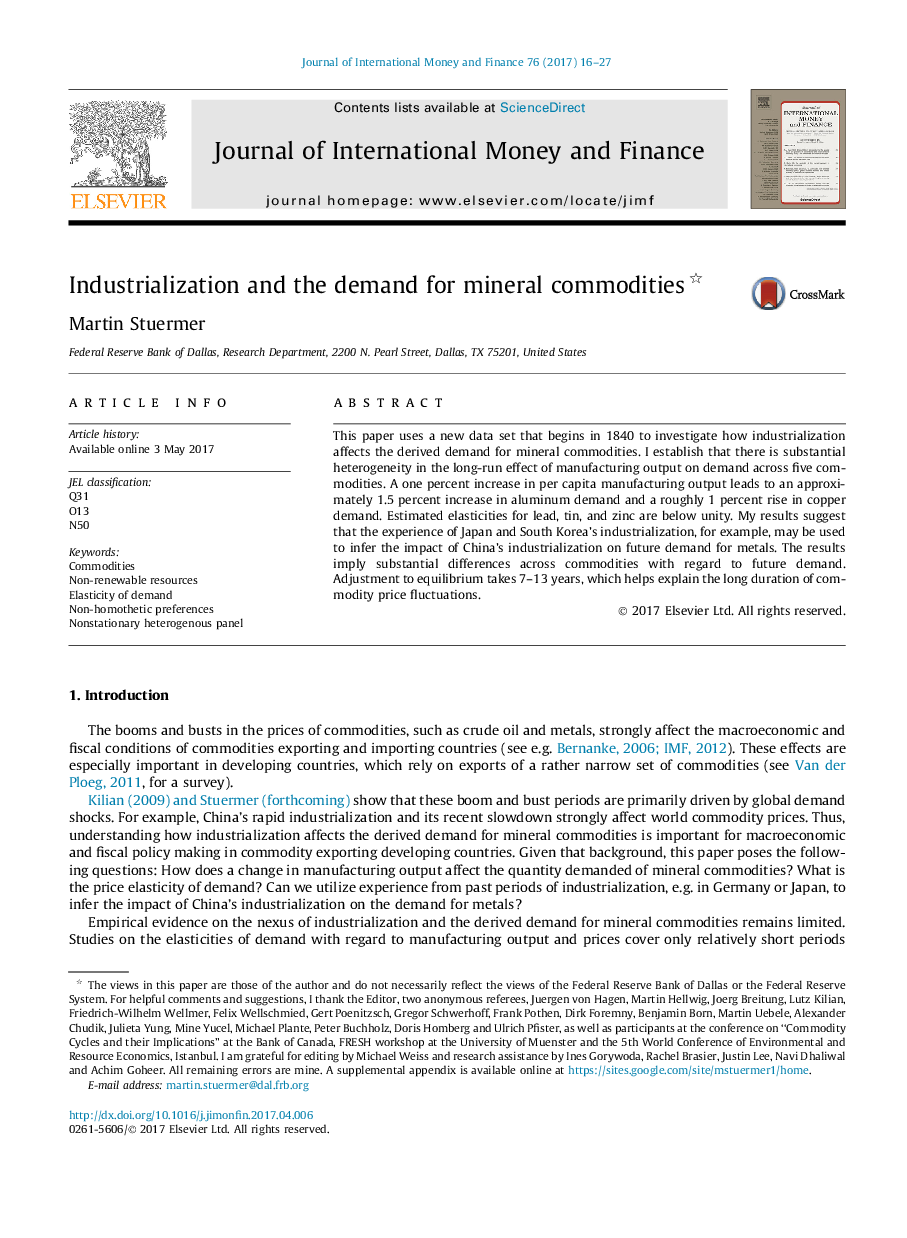| Article ID | Journal | Published Year | Pages | File Type |
|---|---|---|---|---|
| 5101182 | Journal of International Money and Finance | 2017 | 12 Pages |
Abstract
This paper uses a new data set that begins in 1840 to investigate how industrialization affects the derived demand for mineral commodities. I establish that there is substantial heterogeneity in the long-run effect of manufacturing output on demand across five commodities. A one percent increase in per capita manufacturing output leads to an approximately 1.5 percent increase in aluminum demand and a roughly 1 percent rise in copper demand. Estimated elasticities for lead, tin, and zinc are below unity. My results suggest that the experience of Japan and South Korea's industrialization, for example, may be used to infer the impact of China's industrialization on future demand for metals. The results imply substantial differences across commodities with regard to future demand. Adjustment to equilibrium takes 7-13Â years, which helps explain the long duration of commodity price fluctuations.
Related Topics
Social Sciences and Humanities
Economics, Econometrics and Finance
Economics and Econometrics
Authors
Martin Stuermer,
